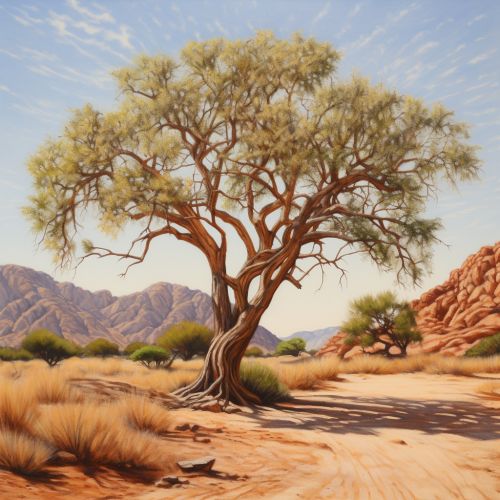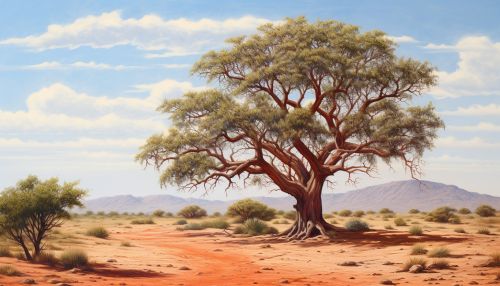Mesquite
Introduction
Mesquite is a common name for several plants in the genus Prosopis, which contains over 40 species of small leguminous trees. They are native to the southwestern United States and Mexico (the chilopsis and velutina species), and South America (the alba species). The name "mesquite" originates from the Nahuatl word mizquitl. Mesquite trees are known for their hardiness, adaptability, and long life span, making them a significant component of desert ecosystems.


Description
Mesquite trees are typically small, ranging in height from 2 to 15 meters. They have a deep taproot system, which allows them to access water resources deep underground in arid environments. The bark is typically rough and dark brown, while the wood is hard and durable. The leaves are pinnately compound, with small leaflets arranged along a central stem. The flowers, which bloom in spring and early summer, are small and yellow, arranged in spikes. The fruit is a long, flat pod, similar to a pea pod, which contains several seeds.
Ecology
Mesquite trees play a crucial role in their ecosystems. Their deep roots help to stabilize the soil and prevent erosion, while their leaves and pods provide food for a variety of wildlife, including deer, rabbits, and birds. The trees also provide shelter and nesting sites for many bird species. Mesquite trees are a key species in many desert ecosystems, where they often form dense thickets.
Uses
Mesquite has been used by humans for thousands of years for a variety of purposes. The wood is hard and durable, making it suitable for construction and furniture making. It is also used for fuel and for making charcoal. The pods are edible and have been used by indigenous peoples as a food source. They can be ground into a flour, known as mesquite flour, which is used in baking and for making beverages. The bark has been used for making baskets, while the gum from the tree has been used as a glue.
Cultivation
Mesquite trees are hardy and adaptable, able to tolerate a wide range of soil conditions and climates. They are drought-tolerant and can survive in areas with low rainfall. However, they prefer well-drained soils and full sun. Mesquite trees can be propagated from seeds, which need to be scarified (the hard outer coat broken) before planting. They can also be propagated from cuttings.
Species
There are over 40 species of mesquite, including Prosopis glandulosa (honey mesquite), Prosopis velutina (velvet mesquite), and Prosopis chilensis (Chilean mesquite). Each species has its own unique characteristics and adaptations. For example, P. glandulosa is known for its sweet pods, which are used in making mesquite flour, while P. velutina is known for its velvety leaves and hard, durable wood.
Conservation
While mesquite trees are not currently considered endangered, they face several threats, including habitat loss due to urban development and agriculture, and overgrazing by livestock, which can prevent the trees from regenerating. Invasive species, such as the tamarisk tree, also pose a threat by outcompeting mesquite for resources.
